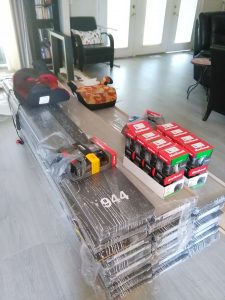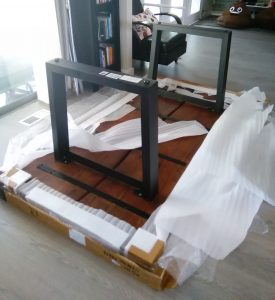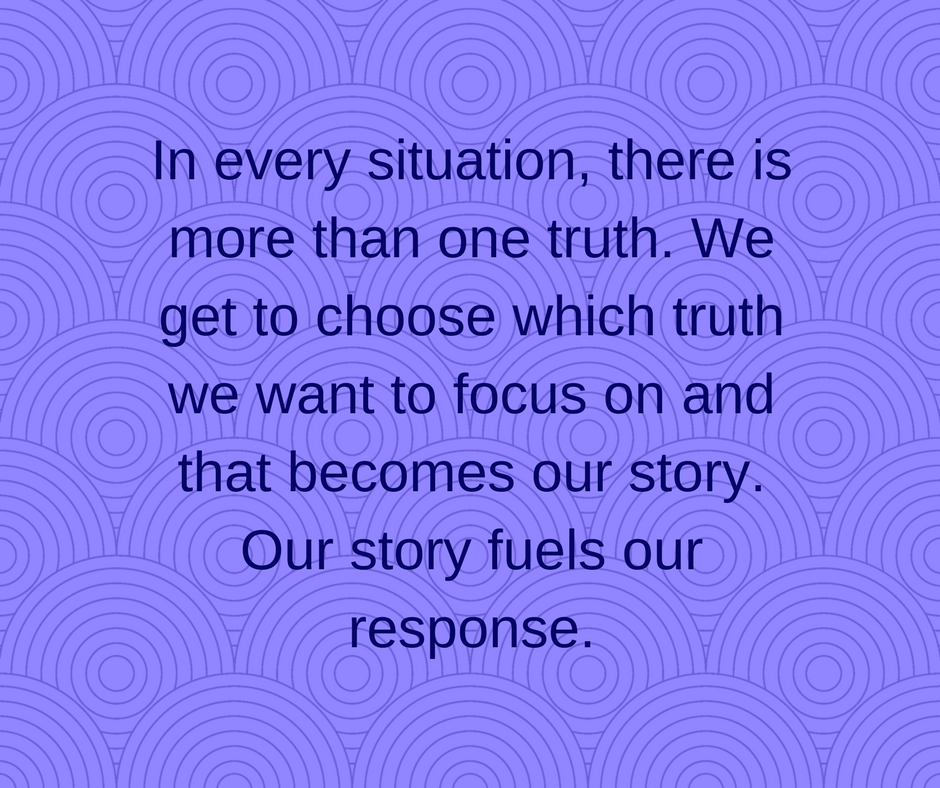
When You Change Your Story, You Change
I was mentoring with a woman I loved and trusted. I was mentoring because, well, I wasn’t as happy with my life as I felt I should be. Each week we talked about things that were seemingly out of my control, which were making me miserable.
One day I was complaining about how my husband managed money. I was fed up with having the same discussion over and over again. Finally, my mentor said, “Mary Ann, you’re not a victim. You can choose to leave.” I was shocked. No, I couldn’t. After all, he was my husband, and I loved him. My religion would make leaving difficult and I had seven kids and . . .
Suddenly I realized I could. I could leave. I wasn’t a victim. I had the ability to choose how I was going to respond to this situation. I was in control of the story and the outcome.
I’m happy to say many years have passed, and I’m still married to the same man. I love him and occasionally we still have a money conversation but it has changed because my story changed.
You see, at the time, this was my story. “My husband doesn’t care how I feel. If he did, he would spend money differently. He does what he wants to do. My life is painful because of my husband.” Wow! Feels dreadful, doesn’t it?
Now, years later, here’s my story. “I have a great relationship with money. I always have what I need. Don’s making progress on his relationship with money. I’m supporting him, sharing what I’ve learned, and enjoying my healthy relationship with both Don and money.” Doesn’t that feel better?
You might be thinking, “That’s the dumbest thing I’ve ever heard! You still have to live with the results of his choices. How can you be happy? Nothing has changed. You’re hiding your head in the sand and being a Pollyanna.”
If I weren’t living my life, I would agree with you. But I have firsthand experience that has proven when we change our story, everything changes.
In the case of my husband, myself, and our money conversation, when I changed my story it changed me. I no longer felt threatened, put upon, hurt, scared, or angry. It stopped impacting me as negatively.
In Every Situation, There is More Than One Truth
Here is something I have come to understand. In every situation, there is more than one truth. We get to choose which truth we want to focus on and that becomes our story. Our story fuels our response.
Take my family for example. You can say that Don and I raised seven beautiful, happy and productive adults. That is certainly true. However, it is also true that Don and I made mistakes; some of our kids struggled a lot and used drugs. That is equally true. Everyone who knows us gets to decide which lens they will see us from. Believe me, there are people in both camps. And frankly. Don and I have had to decide which lens we would see ourselves and our family through.
Jenny, the daughter I talked about two weeks ago was in the same boat. She could see the man who hit her with his car as a drunkard who lost control and drove on the wrong side of the freeway and destroyed her life as she knew it. He deserved to pay. That was absolutely true. Here is what was equally true and which Jenny decided to focus on. Here was a man in trouble who needed help. He had a family and a life but he was in trouble. She wrote to the judge asking her to not just punish him but to help him.
In every situation, there is more than one truth, sometimes many truths.
In our situation, with money, it was true that Don struggled to manage well. It was true that I felt scared and threatened about money. It was true that Don loved me and wanted to do the best for his family. It was also true that I was acting like a victim and allowing that place to determine my response. Thankfully I chose this truth, which has proven to be as true as any of the others – I am not a victim, I can manage money. I am not afraid of how money shows up in my life. I love my husband, he loves me and he is doing his best.
What You Say Is What You Get
You’ve all heard this old saying or something like it, “What you say is what you get.” It’s true. I have lived it.
If you say “My kids are driving me nuts,” they’ll drive you nuts. If you say “I can’t stand my kids today,” or “My kids are so sloppy, messy, noisy, naughty, and so on,” that’s what you’ll get. It’s what you perceive is happening, regardless of what’s actually going on. It’s your story. This will influence your response and your ability to be Present.
James Clear wrote for the Huffington Post, “Your brain is . . . programmed to respond to negative emotions . . . by shutting off the outside world and limiting the options you see around you.”
In our families, in order to have better outcomes and happier days, we need more options, not fewer when it comes to responding to the chaos, noise and sheer work of juggling all that’s required. And there are ways that we can increase our internal resources so that we can and will have more options and respond better – because we will have a better story.
Next week I’ll be talking about that. You’re going to find it uplifting and enlightening. And remember there’s always more than one truth in every situation. Pick the one that will help you get the results you want!
What have you learned that helps you control your story and your response? Please share in the comments section.
Here’s to more joy,
Mary Ann
P.S. You can learn more about controlling your thoughts and emotions for better family relationships in my new book Becoming a Present Parent, Connecting With Your Children in Five Minutes or Less. You can also receive a chapter from the book on Touchpoints, creating points of connection rather than having points of contention, FREE by visiting becomingapresentparent.com It can be life changing for your family. I promise!
If you liked this article and found it useful please share.


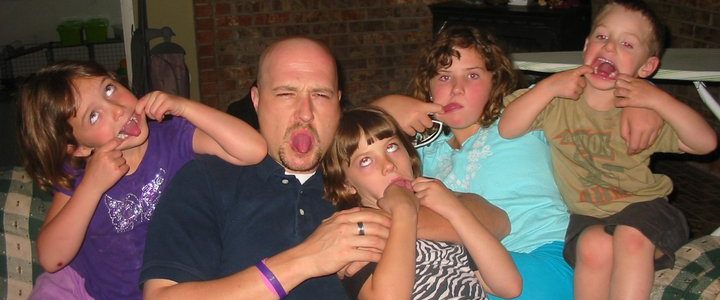
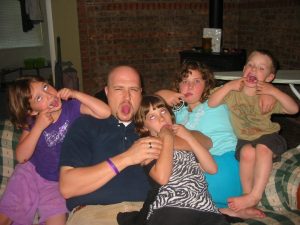 For the last two weeks, I have been writing about families and
For the last two weeks, I have been writing about families and  excited to use it. The next morning was Sunday, and we needed to get to a very important reception right after church. I said to Don, “Honey, there isn’t time to grill chicken today and make it to the reception. You’ll have to grill chicken tomorrow.”
excited to use it. The next morning was Sunday, and we needed to get to a very important reception right after church. I said to Don, “Honey, there isn’t time to grill chicken today and make it to the reception. You’ll have to grill chicken tomorrow.”

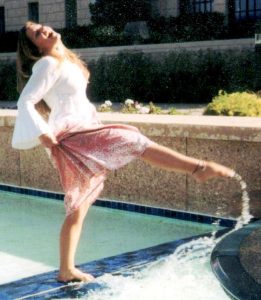
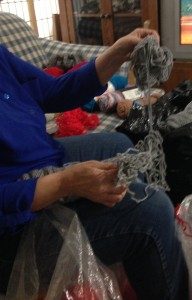
 pounds of yarn and it’s true of family relationships. It took a lot of hours, over a few days, to get the job done. There were moments of extreme frustration when I wished I hadn’t begun the project, when I wanted to quit. However, I kept reminding myself that it would be worth it. I kept visualizing the reward of hanging in – the many beautiful scarves, hats, blankets, and booties that would warm the hearts and souls of so many.
pounds of yarn and it’s true of family relationships. It took a lot of hours, over a few days, to get the job done. There were moments of extreme frustration when I wished I hadn’t begun the project, when I wanted to quit. However, I kept reminding myself that it would be worth it. I kept visualizing the reward of hanging in – the many beautiful scarves, hats, blankets, and booties that would warm the hearts and souls of so many. Knowing the relationship is worth the work, expressing love and a willingness to see another’s point of view, believing in the validity of the other person’s opinion, and by allowing time, you can untangle almost any mess, just as I was able to do with the yarn.
Knowing the relationship is worth the work, expressing love and a willingness to see another’s point of view, believing in the validity of the other person’s opinion, and by allowing time, you can untangle almost any mess, just as I was able to do with the yarn.
 This spring my daughter moved to a new home. It’s on one acre of land. For a city girl that’s a lot of land. The plan is to have pot belly pigs and chickens but this summer the land is fallow. So the sunflowers and weeds have grown up as tall as a man in some places. It’s a veritable fortress of green and gold. The kids don’t venture into it because not only is it tall it’s full of stickers.
This spring my daughter moved to a new home. It’s on one acre of land. For a city girl that’s a lot of land. The plan is to have pot belly pigs and chickens but this summer the land is fallow. So the sunflowers and weeds have grown up as tall as a man in some places. It’s a veritable fortress of green and gold. The kids don’t venture into it because not only is it tall it’s full of stickers. hysterical watching and listening to them as they plowed through the verdant growth of the back pasture. The kids loved it and they will not forget the fun time they are having with their dad.
hysterical watching and listening to them as they plowed through the verdant growth of the back pasture. The kids loved it and they will not forget the fun time they are having with their dad.
 Recently I moved from one small town to another. It required four long months and two moves. It was not easy! We are still not fully moved in because the new floors are not completely finished and we still have a kitchen in progress. The bright spot is this – our bathroom is completely done. That’s right, we have one room in our home which is fully unpacked and completely decorated and ordered. I love going into that room and luxuriating in its completeness.
Recently I moved from one small town to another. It required four long months and two moves. It was not easy! We are still not fully moved in because the new floors are not completely finished and we still have a kitchen in progress. The bright spot is this – our bathroom is completely done. That’s right, we have one room in our home which is fully unpacked and completely decorated and ordered. I love going into that room and luxuriating in its completeness. crash and as part of her therapy to regain her ability to talk and process information we attended a painting class. I was proud of my painting when it was finished. It was such an accomplishment. I had done a great job for a first-time painter.
crash and as part of her therapy to regain her ability to talk and process information we attended a painting class. I was proud of my painting when it was finished. It was such an accomplishment. I had done a great job for a first-time painter.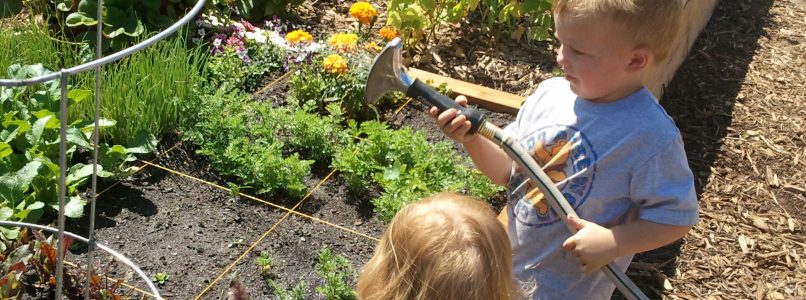
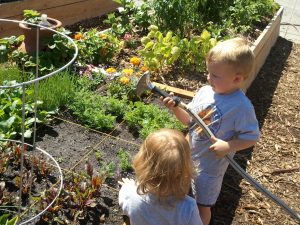
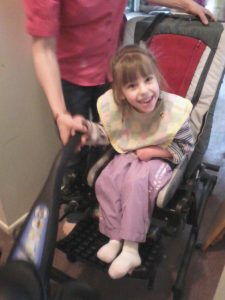

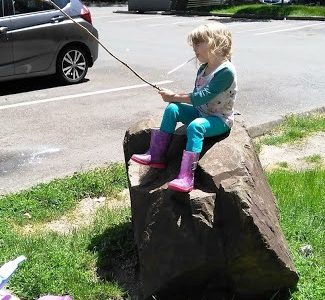
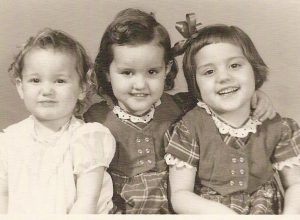 I can remember being four years old, living in sunny CA. I had two sisters younger than me and we were all a year apart. I can see us playing on the front stoop of our home. We were pulling dead pine needles off of the Christmas tree to put in our mud pie cakes.
I can remember being four years old, living in sunny CA. I had two sisters younger than me and we were all a year apart. I can see us playing on the front stoop of our home. We were pulling dead pine needles off of the Christmas tree to put in our mud pie cakes.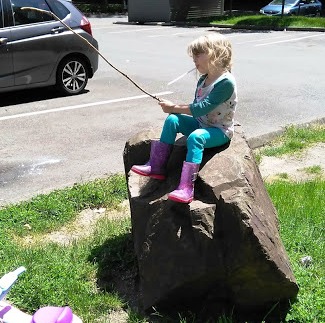


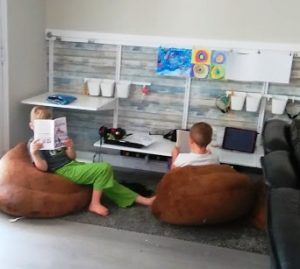 I thought you might be interested in how our three hours of tech free time went – you know those three hours when I was the worst grandma on the planet. Well, Mary and Jack both made progress on the books they are currently reading and Ben reconnected with the joy of playing engineer. There are tremendous benefits for families when there are clear boundaries for technology use. Why not make it the topic of your next family meeting. It can change your family!
I thought you might be interested in how our three hours of tech free time went – you know those three hours when I was the worst grandma on the planet. Well, Mary and Jack both made progress on the books they are currently reading and Ben reconnected with the joy of playing engineer. There are tremendous benefits for families when there are clear boundaries for technology use. Why not make it the topic of your next family meeting. It can change your family!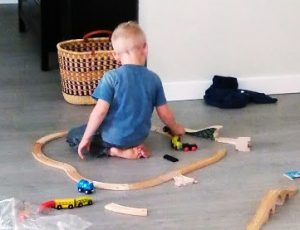 am also interested in your technology challenges.
am also interested in your technology challenges. 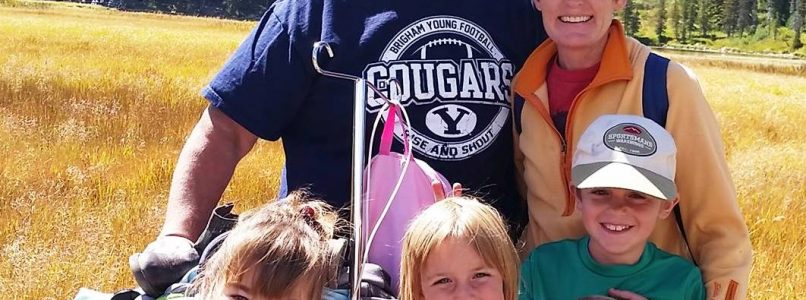
 I went to Seattle to visit my youngest daughter’s family and to participate in her husband’s graduation. When we walked in the house from the airport at 11:30 that night we had to step over toys, shoes, the day’s clothes, etc. My daughter looked at me and said, “Mom I cleaned this house twice for you.” I smiled. I know that feeling. I also know that she has two small, busy children and that she spends time with them.
I went to Seattle to visit my youngest daughter’s family and to participate in her husband’s graduation. When we walked in the house from the airport at 11:30 that night we had to step over toys, shoes, the day’s clothes, etc. My daughter looked at me and said, “Mom I cleaned this house twice for you.” I smiled. I know that feeling. I also know that she has two small, busy children and that she spends time with them.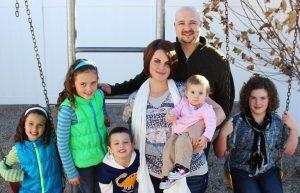 is repeated. She always asks me why I pick some major thing to clean every time I come. Well, it’s because I know what a challenge it is to stay on top of the daily things, let alone get any deep cleaning done, especially when you are willing to put it aside to help a five-year-old ride her bike or create a superhero costume for a nine-year-old son.
is repeated. She always asks me why I pick some major thing to clean every time I come. Well, it’s because I know what a challenge it is to stay on top of the daily things, let alone get any deep cleaning done, especially when you are willing to put it aside to help a five-year-old ride her bike or create a superhero costume for a nine-year-old son. I live with my oldest daughter and her family, in an attached apartment. So I see what goes on there even more intimately. It is almost always slightly chaotic. The floor is rarely uncluttered for more than a few hours at a time. But I see her stop what she is doing to help any one of her four children with whatever project or need they may have. In fact, I have thought to myself, “Man, I would have told them I would help them later.” You see, I still have to work on being Present!
I live with my oldest daughter and her family, in an attached apartment. So I see what goes on there even more intimately. It is almost always slightly chaotic. The floor is rarely uncluttered for more than a few hours at a time. But I see her stop what she is doing to help any one of her four children with whatever project or need they may have. In fact, I have thought to myself, “Man, I would have told them I would help them later.” You see, I still have to work on being Present!
